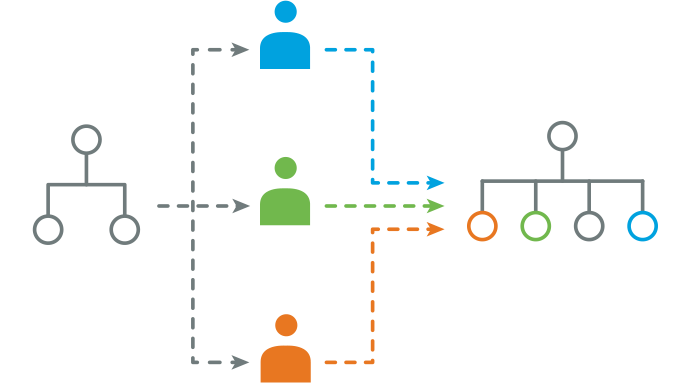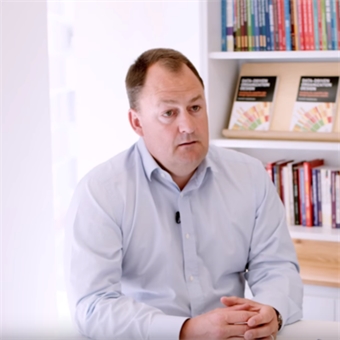Think Your Organization is Effective? Get Your Fitness Tracker On!

Organizations Can Benefit from Rigorously Tracking Their Progress to Help Them Perform
In my book Data-Driven Organization Design, I started my fourth and last section with the quote from Hosea Ballou: “Theories are always very thin and insubstantial, experience only is tangible.” This is seemingly obvious and yet executives do not give sufficient attention to the most important part of organization design: the execution.
Drawing from my personal experiences of organizational design (OD), I’ve noticed a consistent pattern. People tend to perceive design as the “sexy and fun part” of organization transformation. Devising strategies to get your organizations from its ‘as-is’ to its ‘to-be’ state is indeed exciting. It’s not surprising that this phase attracts full-throttle enthusiasm and engagement from senior executives. Yet, when it comes to the execution of the design, I repeatedly witness a lack of commitment. Line managers are left to fight the implementation battle alone, while the leaders or consultants who dictated the change move onto the next exciting project. The consequences is that designs often stumble and overrun, failing to deliver on the value they promised.
Don’t get stuck in the mud
One of the most basic traps that OD practitioners fall into is focusing obsessively on getting the ‘right’ design. One of the consequences is that designs get treated as fixed manuals, instead of being adaptive and iterative. In reality, designs will never be 100% right. Instead of faithfully sticking to a design, practitioners need to iterate it by adapting it to reality – or as I reinforced in the book, by making-it-real. As Einstein once quipped, “In theory, theory and practice are the same. In practice, they are not.” Given most OD projects fail due to the lack of organizational agility during their execution, what can practitioners do to overcome this challenge?
In Chapter 3.1 of my book I explain: “An architect can draw hundreds of pictures, floor plans, and electrical schemas, but if nothing is built, then so what? The only value of a theory is if it works in practice. It is easy to live in the world of theory plans, or designs. It is safe. But once a design or plan has been decided upon, then what? How do you ensure success? How do you sustain it? How do you mitigate the downside risks?”

Figure 1. The execution of organization designs from its ‘as-is’ to its ‘to-be’ Target Operating Model is a complex process. Bringing collaboration across work streams will help increase the likelihood of successful end result.
Get smart with tracking
Like athletes who rely on fitness bands to tangibly track their heart rate, calories intake, and cardio workouts, organizations can benefit from rigorously tracking their progress to help them perform.
organizational transformation is an intricate process. Analytical tracking brings transparency to the process, but this starts with getting the right data in place. Choose your data carefully. Much time is wasted and decisions misled by analysing inconsequential metrics. What are your key indicators of success? Here are just a few to think through:
- Headcount
- Performance
- Process efficiency
- Span of control
- Cost (Payroll)
Once you have selected your key metrics, track them and report on them religiously. Are you performing to plan? If not, why not?
You only succeed if you know when you’re failing
Often when analytics is advertised by a vendor we see an upward line indicating the success of a data-led strategy. And yet, arguably the real value of analytics is realised when we eagerly expect things to go well, but see otherwise. Being able to quickly recognise and investigate problems has 3 main benefits:
- Agility – In practice, deviation from design is inevitable. The time it takes to respond to deviations is the difference between quick fix and a long term embedded problem. Being clear about what data you are tracking and being consistent not only makes it easier to identify issues faster, but understand where focus is needed.
- Collaboration – With consistent data and focused analytics comes clarity. This empowers employees and work streams across the organization, not just decision-makers to contribute ideas, rapidly prototype and test hypotheses.
- Transparency – Actual performance may adrift from budget, or two approvers – even the most scrupulously honest ones may disagree over a given decision due to the absence of evidence. Tracking, supported by consistent data, enable practitioners to quickly query, retrieve, and audit historical decisions.
By establishing key milestones, measuring and documenting impact, we allow organizations to have long-term memory and to learn from past mistakes. The result is an organizational nimbleness to think, act, and respond to changing circumstances.
Sustaining your edge
Last but not least, we need to remind ourselves that organizational transformation is not a one-off repair project, but an on-going learning process that requires a collective commitment of everyone within. There is no doubt that implementing a new design is emotionally draining and requires constant communication. To sustain the competitive edge that transformation brings, we need to build an institutional resilience, an ability to embrace change and make it real – that is why consistent and focused tracking is so important to organizational success.
About the author: Rupert Morrison is the CEO of Concentra, a leading analytics company and winner of the Technology Innovation Award 2011 in The Sunday Times Tech Track 100. He led the creation of OrgVue, a solution for HR analytics, organization design and workforce planning, which was selected as one of four Gartner Cool Vendors in the Human Capital Management field from across the globe. Rupert's aim is to revolutionize the way people see, plan and manage their organizations to gain competitive advantage. His approach combines his experiences of running a fast growth tech firm alongside a wealth of experience in supply chain optimization, capacity planning and organization design projects.
Special offer: Save 20% (£7) off the RRP of £34.99 when you order Data-driven Organization Design with discount code HRDDODB


